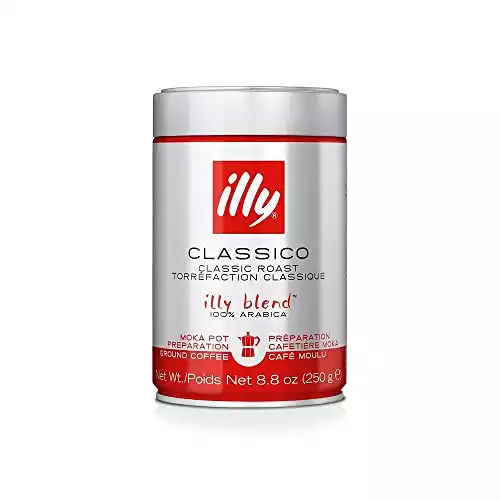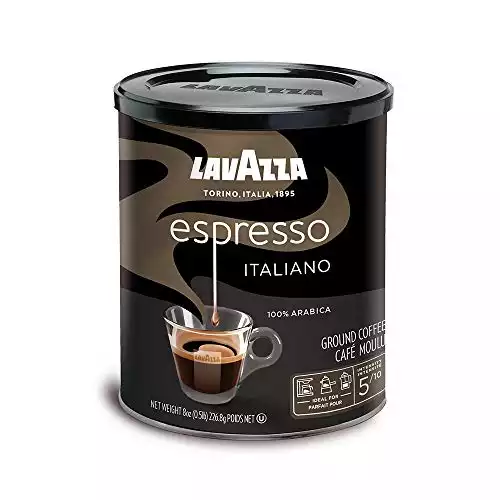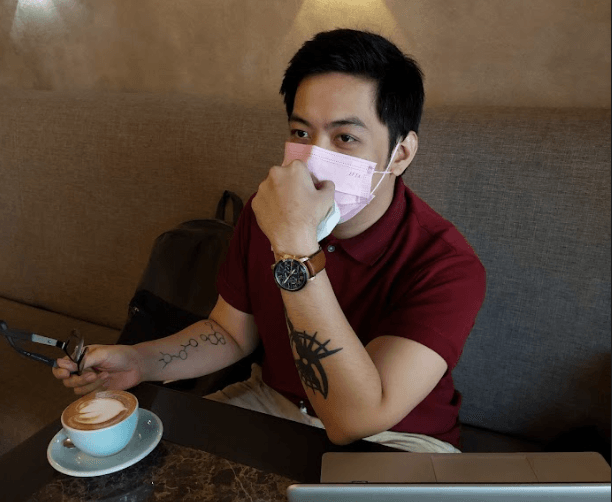Grind size matters when it comes to this coffee maker. Read on to find out what is the best Moka pot grind size and how it affects the taste of your cup of Joe.
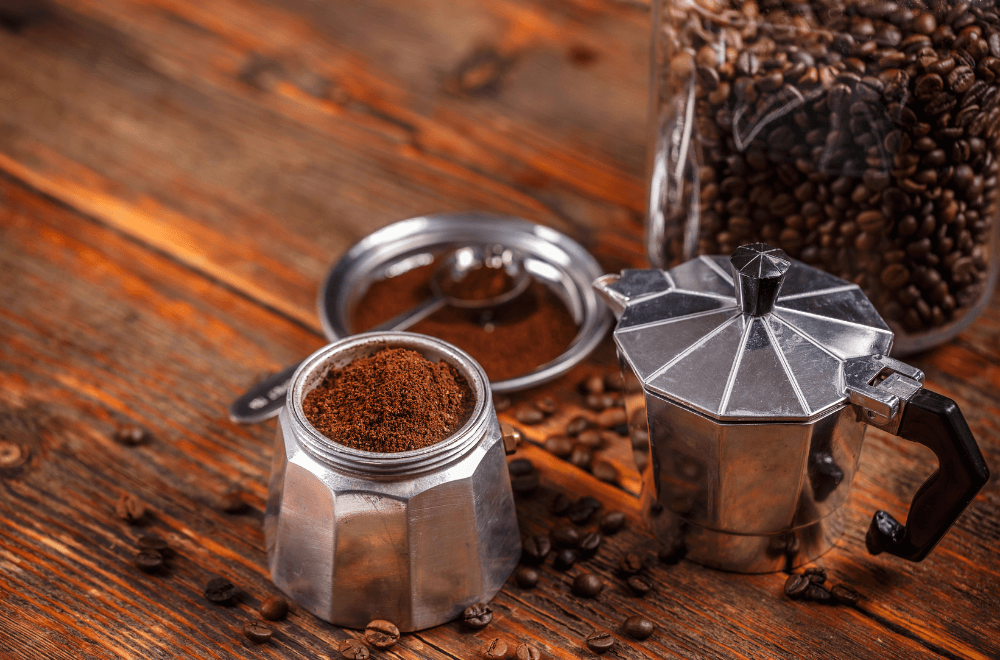
A Moka pot can be unforgiving for first-time users without proper guidance. You are playing with fire, literally, if you don’t pay enough attention to the brewing process. The good news is that when it comes to grind sizes, there is room for flexibility.
Most coffee brewers will agree that a medium to medium-fine grind is the best Moka pot grind size, especially for first-time users. However, there are different types of coffee beans with distinct densities and flavor notes. You also have to factor in your taste preferences, so it is highly encouraged to experiment when you brew with your Moka pot.
Fine Grinds Can Be Bad News
The Moka pot is known to emulate a rich, espresso-like cup of Joe. That means you can still use fine grinds, right? Well, not exactly.
An espresso machine has a pump that forces hot water at high pressure through the grounds. The finer the grounds, the faster the extraction process will be.
That doesn’t work with a Moka pot. For starters, it uses a more natural but weaker steam pressure, pushing the water through the coffee chamber. As pressure builds up, the coffee and water are pushed again toward the top chamber where the delicious java is held.
The problem with fine grinds is that they can be too tight and compact. This leaves no room for the coffee to expand when water is added. Steam pressure can only reach around 1.5 bars, so it definitely won’t be able to extract all of the flavors from your coffee.
If you leave too much space, the water can extract more of the coffee’s unpleasant bitter flavor since finer grinds are faster to brew. This is what we call over-extraction. If you prefer a stronger-tasting java, then you might like it, but it’s not for everyone.
Fine Grinds Can Result To Clogging
Another problem with using fine grinds is potentially clogging your equipment. Coffee residue can block your filters which can accumulate if you don’t do daily maintenance.
These coffee remnants can also be carried over to your finished blend. Additionally, a blocked filter means the pressure from the steam can build, and it will find a way to get to an exit.
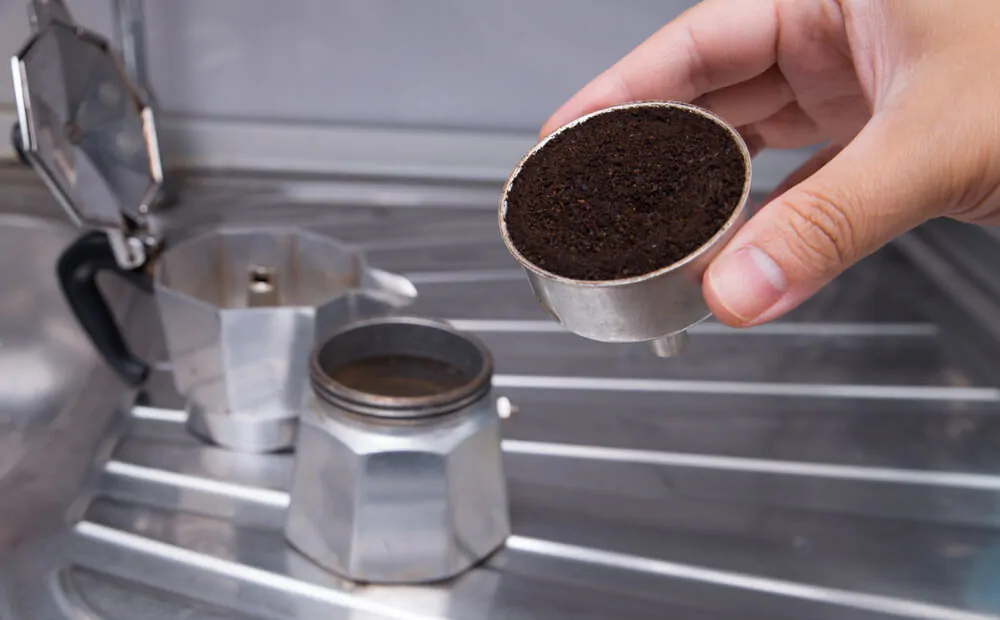
It can force its way through a weak spot in the coffee bed found inside the coffee chamber. This can result in the water getting centralized only through that weak link and leaving the rest of the coffee unsaturated and unextracted.
The worst-case scenario is that the pressure finds a weak spot in your Moka pot instead. If that happens, run for cover.
It is fine if you want to experiment with fine grinds; as I have mentioned before, there are different types of coffee beans and Moka pots that can brew you a flavorful cup with this grind size. Clean your Moka pot every use to prevent it from getting clogged. Learn more in our Moka pot size guide.
Using Coarse Grinds Is A Challenge
A medium-coarse grind is also an acceptable grind size for a Moka pot, provided that you are familiar with how the coffee maker works. Anything coarser than that can cause some problems.
Coarse grinds are much larger, which means it requires a longer steeping time for the flavors to be extracted. Coarse grinds also cover a smaller area inside the chamber. Naturally, the water that goes through it will also flow faster to the next chamber as there is little resistance from the steam pressure.
As a result, you will have a bland and watery cup of Joe that is much more acidic. The coffee grinds won’t have much time to dissolve and mix with the water. Other properties, such as fats and acids, will be absorbed from the get-go, but the remaining flavors coming from the sugar and the oils won’t get extracted.
On the bright side, there won’t be any steam pressure build-up with coarse grinds. The drawback is that you will waste the grinds along with the flavors coffee is known for.
Pay Attention To The Coffee-To-Water Ratio
There are many coffee-to-water ratios that you can use depending on how you prefer your java. For a stronger and more espresso-like brew, the recommended ratio is 1:7 to 1:8, or one gram of coffee for every seven grams of water.
If you want something lighter that is closer to drip coffee, you can use a 1:10 to 1:12 ratio, but this might require a larger Moka pot size, so do take note.
There is no need to worry if you don’t have the means to measure it. Most standard-size Moka pots are designed to fit the 1:7 to 1:8 ratio, so filling it up works just as well if you aren’t particular with your brew.
You are all set just as long as you have the right grind size. Start with a medium grind and try to experiment with the grinds to pinpoint your preferred taste.
If your brew is too watery and acidic, it might be too coarse, so go for medium-fine. If it is too bitter, adjust the coarseness and go for a medium-coarse, and so on.
If the taste is off despite changing the grind sizes, you might be heating it for too long, so you should adjust the brewing time and the strength of your flame. You can check out our guide on how to know when your Moka pot is done brewing to learn more!
The Case For Whole And Pre-Ground Coffee Beans
I will always recommend opting for freshly roasted whole coffee beans instead of pre-grounds, as it allows for more control over your grind size. However, having your own coffee grinder is a requirement for this.
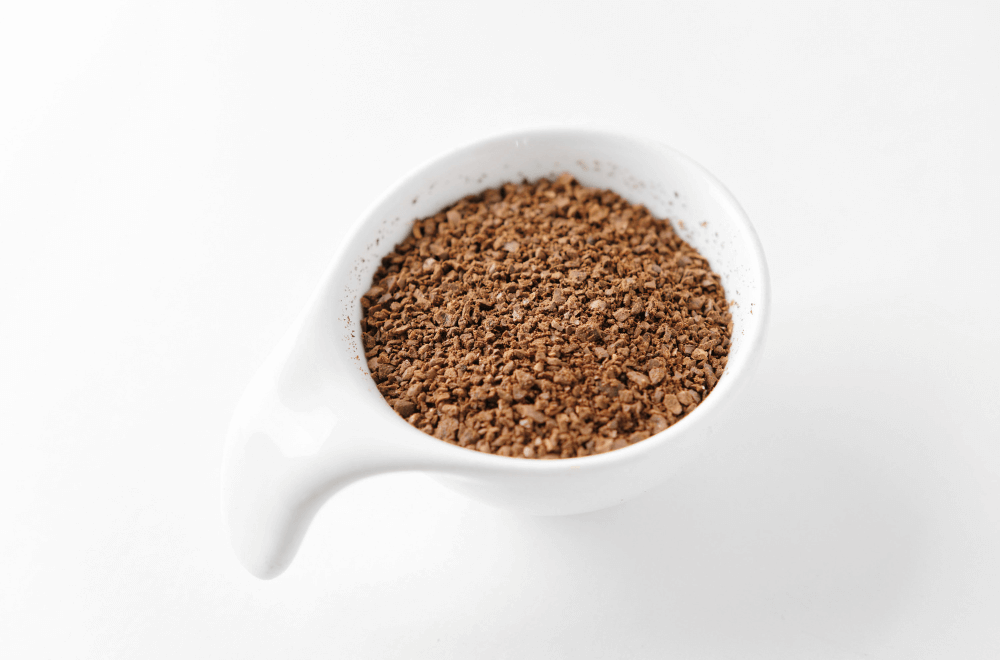
You are blessed if you have an electric burr grinder, as it provides a consistent grind compared to its blade counterpart. You can still grind using your existing ones if you don’t have an electric burr. You can also use a food processor or a blender as an alternative but be warned that it will not give a consistent grind.
The key is to check for the texture.
A medium-coarse grind has a rough sand-like texture and chunks smaller than rock salt. A medium grind is comparable to beach sand as it is much smoother, while a medium-fine grind is close to the texture of sugar, albeit a bit chunkier when touched.
You are in luck if you don’t have a grinder, as most pre-ground coffee beans are medium grinds, which are consistent in size. Since you will be using an Italian coffee maker, go for an Italian brand for that authentic Moka pot brew. I recommend Illy’s Classico Signature Italian Blend as it offers a Moka pot ground option ideal for the coffee maker.
Lavazza’s Espresso Italiano Ground Coffee Blend is another option, as its fruity and floral notes are something to behold. If you liked this post, you might enjoy our round-up of the best Moka pots.
FAQs On Moka Pot Grind Size
What Is The Best Moka Pot For New Users?
The aluminum Bialetti Moka Express is one of the most trusted brands in terms of Moka pots and comes in different sizes up to 18 cups. It has the traditional design and components, making it easy to learn and use and very affordable!
Should You Tamp Your Ground Coffee When Brewing With A Moka Pot?
You should not tamp your grinds for a Moka pot. This will make them more compact and will likely lead to clogging, especially if you are using fine grinds. Creating an even bed without pressing is enough.

